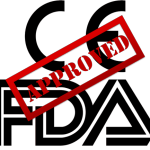The “regulatory affairs” section comprises over 200 tasks that need to be completed during the development and approval of medical devices.
Here, you will find an overview of the most essential content so that you can get your device approved quickly.
Content
On this page, you will find articles on the following topics:
- What regulatory affairs is
- Regulatory requirements
- Authorization and documentation
- Authorities, institutions, and associations
- Further topics of regulatory affairs
1. What regulatory affairs is
Regulatory affairs comprises the processes and activities that ensure that medical devices meet the regulatory requirements of the countries where they are sold. This includes
- obtaining the necessary approvals from the regulatory authorities,
- compliance with applicable regulations and standards, and
- maintaining conformity throughout the entire product life cycle until decommissioning.
The tasks of regulatory affairs also include monitoring changes to regulations and standards and communicating these changes to stakeholders within the company to ensure continuous compliance.
Regulatory affairs thus plays a crucial role in ensuring that medical devices are safe, effective, and comply with legal requirements.
Further information
Refer also to the article on regulatory affairs managers’ tasks, competencies, and earning potential. This includes the task of developing a regulatory strategy.
2. Regulatory requirements
a) Germany
| Laws |
Medical Devices Law (no longer valid)
Medical Devices Implementation Act MPDG |
| National regulations |
Medical Device Operator Ordinance (Medizinprodukte-Betreiberverordnung – MPBetreibV)
Medical Device User Notification and Information Ordinance (Medizinprodukte-Anwendermelde- und Informationsverordnung – MPAMIV) |
b) Europe
c) USA
d) Other markets
3. Approval and documentation
a) Approval
Find more information on international approval
b) Qualification and classification (How should my device be classified?)
c) Technical documentation (What do I need to document for each device?)
d) Quality management (What should your company fulfill?)
Quality management is not usually the responsibility of regulatory affairs. Nevertheless, we have listed some important articles for you.
4. Authorities, institutions, and associations
a) Germany
b) Europe
c) International
| IMDRF: International Medical Device Regulators Forum |
5. Regulatory affairs: Further topics
Here, you will find an article on the tasks and competencies of regulatory affairs managers.
Note the advantages and disadvantages of Regulatory Information Management Systems (RIMS) and their role in manufacturers’ digital transformation.
Part of the tasks of regulatory affairs is regulatory intelligence.
Do you need support?
Do you still have questions, for example, about the approval of your devices? Then, take advantage of our free micro-consulting service.
If you would like support in developing and “approving” your medical devices in compliance with the law, contact us right away. The Johner Institute team will be happy to help!
EN ISO 14155:2020 is a standard that has not yet been harmonized for the MDR. It is titled “Clinical investigations of medical devices for human subjects – good clinical practice.” It describes the state of the art for medical device manufacturers in preparing, planning, conducting, and evaluating clinical investigations. It also determines the responsibilities of…
Details
The MDR contains the Classification Rule 11. This rule is especially for software. The Rule 11 has serious implications: it bears the potential to further undermine Europe’s innovation capacity. Manufacturers should familiarize themselves with the MDCG‘s interpretation to avoid misclassifying software and to be able to follow the reasoning of notified bodies and authorities. This article…
Details
Brexit was completed in January 2021. What was a cause for celebration for some means an additional burden for many – including medical device manufacturers. For manufacturers, it is important to understand which regulatory requirements they will have to fulfill and which transition periods they will benefit from if they want to continue selling their…
Details
Regulatory affairs managers take care of the approval of medical devices. In this article, you will learn, Update: Impact of the digital transformation on the tasks of regulatory affairs managers added!
Details
ISO 19011 is the international guideline for auditing management systems. Therefore, your notified body considers ISO 19011 state-of-the-art when it checks during your ISO 13485 certification audit whether you are conducting your internal and supplier audits effectively. Consequently, those responsible for quality management, in particular, should be familiar with and consider ISO 19011. This article…
Details
C5 certificates are relevant for service providers and, where applicable, for medical device manufacturers. The German Digital Act (DigiG), which came into force at the beginning of 2024, redefines the requirements for cloud services in the healthcare sector. This article explains the most important aspects of C5 certification for medical device manufacturers and service providers…
Details
Document control is a documented procedure that specifies how documents are created, reviewed, approved, labeled, distributed, and updated. Organizations certified according to ISO 9001 or ISO 13485 are obliged to document control.
Details
This article examines the AI Act’s applicability to manufacturers of medical devices and IVD that do not place AI-based devices on the market. Among other things, it answers the question of whether a manufacturer must comply with the AI Act if he uses ChatGPT or develops an AI system that classifies customer feedback for his…
Details
Most manufacturers use harmonized standards to demonstrate the conformity of their devices with the general safety and performance requirements. This also applies to medical device manufacturers, for example.
The EU AI Act has been published. Many manufacturers of medical devices and IVD, as well as other healthcare players, are faced with the major task of understanding the 140+ pages of legal text and complying with the requirements. Note: Infringements/violations of the AI Act are punishable by a fine of up to 7% of…
Details
